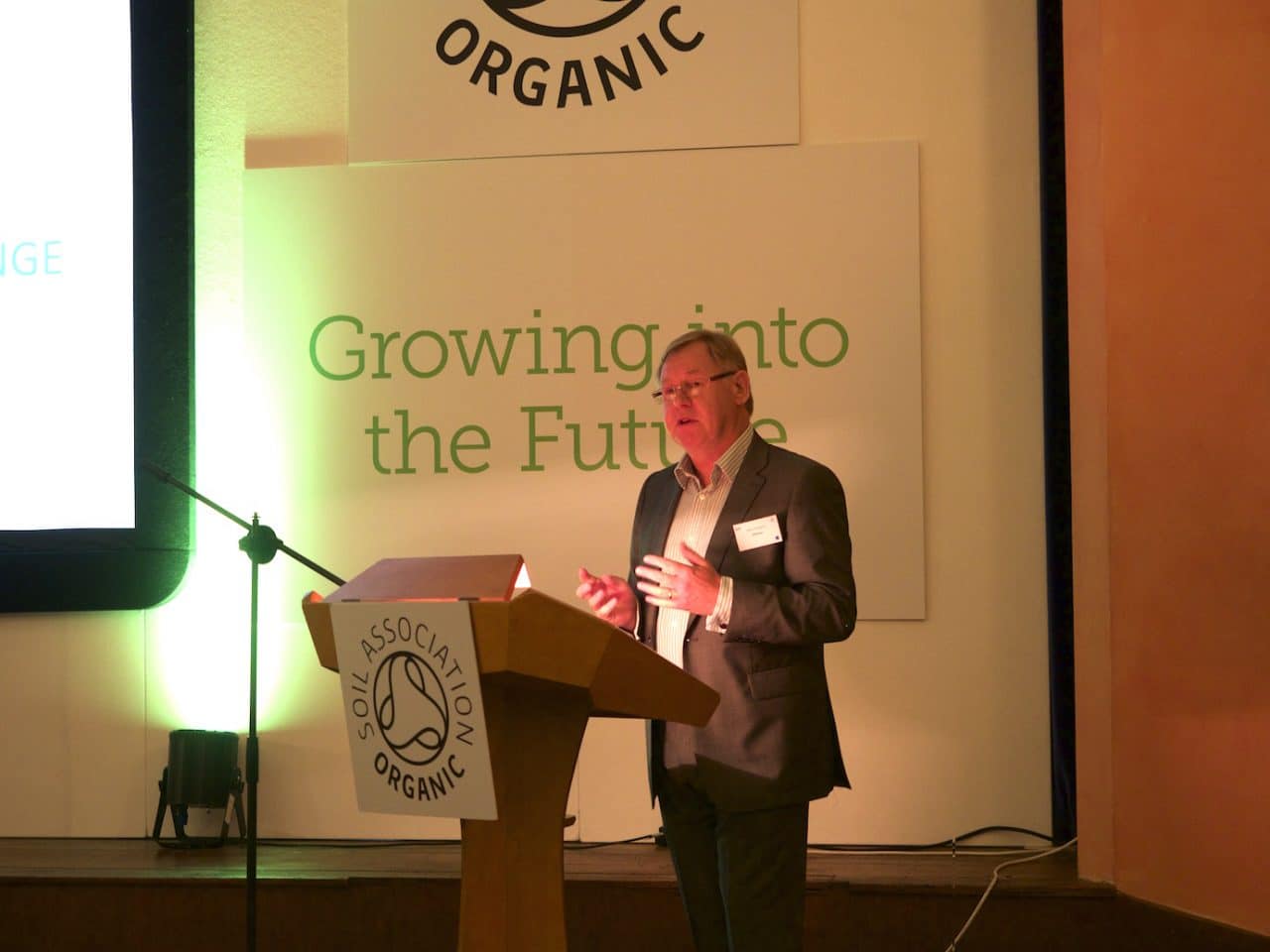The return to growth of organic retail sales is a “great success story” a top retail expert told a packed trade briefing in London today.
Mike Watkins, head of retailer and business insight at retail analyst Nielsen, revealed that organic food and drink sales in the UK rose by 3% during the year ending 15 August 2015, taking total sales to £1.3 billion – a 1.4% share of the £96 billion food and drink market. Set against the backdrop of a shrinking grocery market (down 0.6% by value, and down 1.9% by volume), this was an impressive performance, he said.
Watkins was speaking at a special trade briefing staged by the Soil Association, and timed to coincide with the mid point of its Organic September activities. He said that there was a “£500 million opportunity to be taken” if those organic categories that are currently underperforming could be made to achieve the sector’s average market share of 1.4%.
“He said that there was a ‘£500 million opportunity to be taken’ if those organic categories that are currently underperforming could be made to achieve the sector’s average market share of 1.4%”
Watkins identified organic’s perceived quality and health benefits (which currently trail ‘no pesticides’, ‘taste is better’, ‘better for the environment’ and ‘animal welfare’ in consumers’ motivations for buying organic) as key areas for development. With an ageing population, and 60% of consumers looking for healthy options, here was an opportunity to scoop up new customers.
Looking at the wider picture Watkins said a new retail market had emerged, charaterised by trends such as ‘channel shifting’, ‘digital disloyalty’, ‘small store shopping’, ‘retailer disruption’ and ‘out of home consumption’.
Another notable trend, he said, was one in which more consumers were seeking reassurance about the ethical credentials of products. Consumers for whom this was important were more likely to shop at Waitrose, M&S, the Co-op, Sainsbury’s and Lidl, Nielsen’s data shows. The inclusion of Lidl, said Watkins, was evidence the discounters were now communicating a wider set of values and potentially appealing to organic consumers.
 This was a point not lost on Beth Hart, head of product development and technology for fresh and frozen at Sainsbury’s. But she said Sainsbury’s was responding positively to the opportunity being presented by organic’s buoyant performance. She said that Sainsbury’s So Organic range now had a brand value of £200 million, and was being added to with innovative new products. She noted that Sainsbury’s saw organic shoppers as “extremely desirable customers”, adding that “we want Waitrose shoppers in our stores” – although Sainsbury’s remains the country’s biggest organic retailer, with a hefty 29% share.
This was a point not lost on Beth Hart, head of product development and technology for fresh and frozen at Sainsbury’s. But she said Sainsbury’s was responding positively to the opportunity being presented by organic’s buoyant performance. She said that Sainsbury’s So Organic range now had a brand value of £200 million, and was being added to with innovative new products. She noted that Sainsbury’s saw organic shoppers as “extremely desirable customers”, adding that “we want Waitrose shoppers in our stores” – although Sainsbury’s remains the country’s biggest organic retailer, with a hefty 29% share.
The Soil Association’s trade consultant, Finn Cottle, gave the global perspective on organic. With the global market worth £40 billion, she said, there were huge export opportunities for British producers and brands. The Soil Association was supporting British organic businesses by leading missions to international trade shows in the US, Asia and Europe – and providing practical guidance on individual markets.
 Cottle acknowledged that the organic sector in the UK still had some way to go before it could achieve the growth – or penetration – being seen in mainland Europe. “We don’t even appear in the top 10 when it comes to per capita consumption,” she said. Key differences were a lack of a national organic plan in the UK, a more favourable retail structure (specialist organic-only chains are a common feature in Europe) and wider consumer acceptance or organic, which is often seen as a natural choice.
Cottle acknowledged that the organic sector in the UK still had some way to go before it could achieve the growth – or penetration – being seen in mainland Europe. “We don’t even appear in the top 10 when it comes to per capita consumption,” she said. Key differences were a lack of a national organic plan in the UK, a more favourable retail structure (specialist organic-only chains are a common feature in Europe) and wider consumer acceptance or organic, which is often seen as a natural choice.











